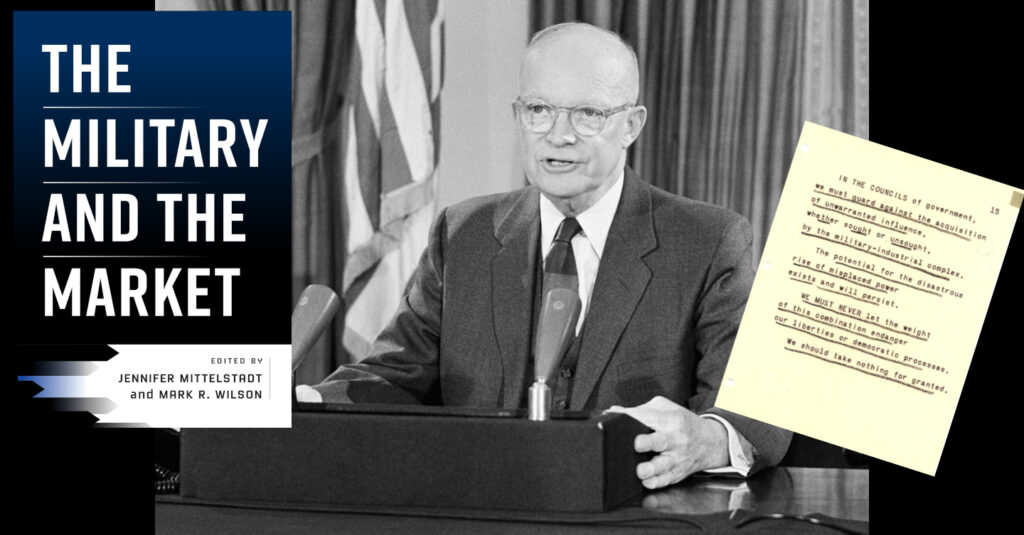Since President Eisenhower first named and warned against the military-industrial complex in his farewell speech, the relationship between “the military and the market” has been the subject of heightened scrutiny from Congress, the press, and scholars. A new book by that name provides new and surprising perspectives by taking the long view of two centuries of the economic dimensions of the military from entrepreneurs and new technologies to consumer products and sex workers. A BETTER PEACE welcomes editors and contributors Kara Dixon Vuic, Jennifer Mittelstadt and Mark R. Wilson as they discuss they discuss the good, the bad and the ugly of the military-industrial complex and beyond with podcast editor Ron Granieri.
What most people think when they think of the military and the market is kind of weapons and materiel contracting, maybe service contracting. So one of the things that the book wants to do is blow open our understandings and see that the military actually operates in dozens and dozens of different ways and different capacities.
Podcast: Download
Kara Dixon Vuic is the Lance Corporal Benjamin W. Schmidt Professor of War, Conflict, and Society in 20th-Century America at Texas Christian University.
Jennifer Mittelstadt is Professor of Political and Military History at Rutgers University and former Harold K. Johnson Chair of Military History at the U.S. Army War College.
Mark R. Wilson is a professor of history at the University of North Carolina at Charlotte. His research explores the history of U.S. war mobilizations, and the development of military-industrial relations, from the 19th century to the present day.
Ron Granieri is an Associate Professor of History at the U.S. Army War College and the Editor of A BETTER PEACE.
The views expressed in this presentation are those of the speakers and do not necessarily reflect those of the U.S. Army War College, U.S. Army, or Department of Defense.
Photo Description: Screen cap of President Dwight D. Eisenhower’s farewell address and the reading copy he marked up for use during the speech.
Photo Credit: Eisenhower Presidential Library and Museum website

